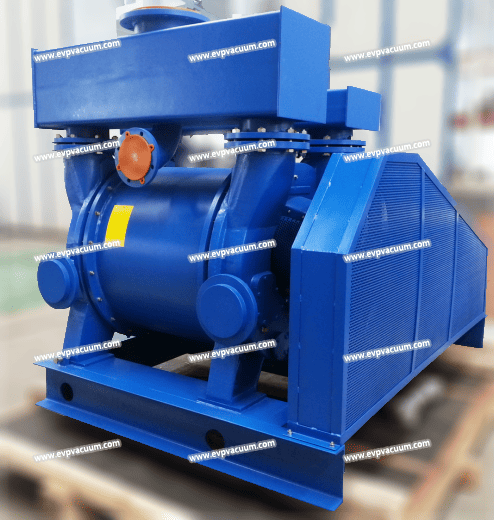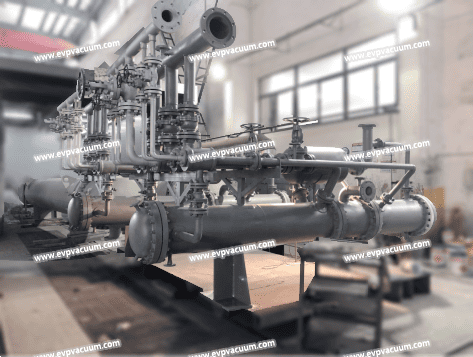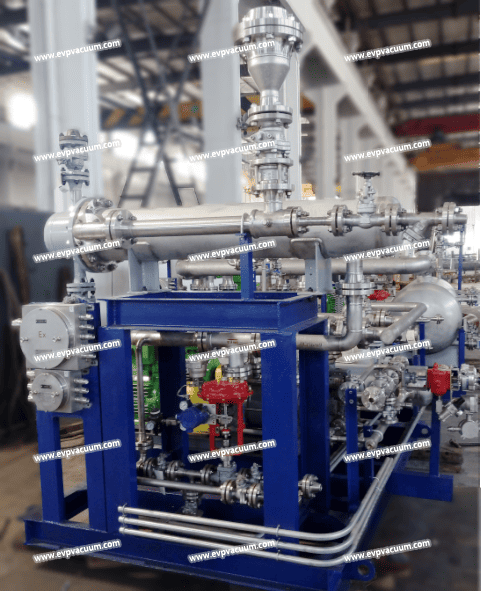Steel vacuum degassing process and equipment
With the rapid development of steelmaking technology, vacuum degassing technology has become an effective measure to reduce gas and non-metallic impurities in steel. The key lies in how to obtain vacuum. This article takes the vacuum treatment of molten steel outside the furnace using a liquid ring vacuum pump and steam jet pump as an example, introduces the equipment composition of the vacuum system, explains the vacuum pumping theory of the vacuum pump, and uses the method of experimenting and improving to optimize the vacuum performance of the liquid ring vacuum pump and steam jet pump. In this article, the vacuum degassing process of molten steel and its effects are given.
We will focus on the basic structure of the vacuum pump of the vacuum degassing equipment.
1.liquid ring vacuum pump
When using a liquid ring vacuum pump as a starting pump, the ultimate vacuum is 90% (for example, if the atmospheric pressure is 770 Torr, the residual pressure can reach 77 Torr). Since the working characteristic of this pump is constant volume, that is, no matter how high the pressure of the pumped gas is, the volume of the gas pumped out per unit time is always constant.
2.Steam jet pump
Taking into account some shortcomings of existing mechanical pumps in the application of vacuum degassing equipment, a water vapor jet pump is often used as a vacuum pump for vacuum degassing equipment, and its simple working principle is shown as follows .
The steam jet pump is composed of the following main parts: a receiving chamber 1, where the gas extracted from the vacuum chamber enters; a nozzle 2 installed in the receiving chamber, followed by a diffuser 4. The nozzle is usually a Laval type nozzle type that gradually narrows to the throat and then gradually expands to form a supersonic nozzle. The diffuser is mostly formed by two opposing cones, with a transitional cylindrical part between them – the throat of the diffuser. The diffuser and the nozzle are strictly arranged on the same center line. High-pressure water vapor of 4 to 6 atmospheres is introduced from the steam pipeline as the power source of the pump. The steam ejected through the diffuser nozzle gains a huge speed. The steam carries the extracted gas in the mixing chamber and rushes into the diffuser, entraining the gas along the path of movement. Finally, the gas is compressed to a certain pressure in the diffuser together with the working steam and discharged. In a single-stage steam jet pump, the vacuum degree can reach 80 to 150 Torr. In order to obtain a lower pressure, further compression is required, so several stages of jet pumps and intermediate condensers are required. After the steam is ejected from the first-stage jet pump together with the gas, a mixed condensation is immediately carried out, that is, the mixed gas is introduced from the bottom of the condenser, rises along a tortuous path in the condenser, and cold water is sprayed downward from the top. In this way, the steam is condensed into water, and the temperature of the cooling water is increased. Since the installation height of the condenser is greater than 10 meters (equivalent to the water level of an atmospheric pressure), it flows into the sewer of the water seal pool along the pipeline. At this time, the main thing in the condenser is only the pumped gas. At this time, the steam still has a certain partial pressure under the specific pressure and temperature. These mixed gases are sucked into the second-stage jet pump, compressed in the diffusion pipe, and then condensed… until they are sucked into the fourth-stage jet pump, compressed in the fourth-stage diffusion pipe, and directly ejected into the atmosphere. Sometimes a muffler is added and discharged into the atmosphere after silencing.
The characteristics of steam jet pumps are simple structure, low cost, and low requirements for cooling water (the condensation effect is best when the groundwater temperature is low, while the river water can exceed 30℃ in summer, and the cooling effect is not good, so it consumes water. To save water, it can be recycled and reused), and the water consumption is also relatively large. In addition, since the corrosive medium is diluted, the condenser is less corroded. Of course, it is possible not to use a condenser, but it is not economical. Therefore, a steam jet pump with a condenser is required. From a comparative point of view, it is more appropriate to use a steam jet pump for vacuum refining and degassing of molten steel than a mechanical pump.




